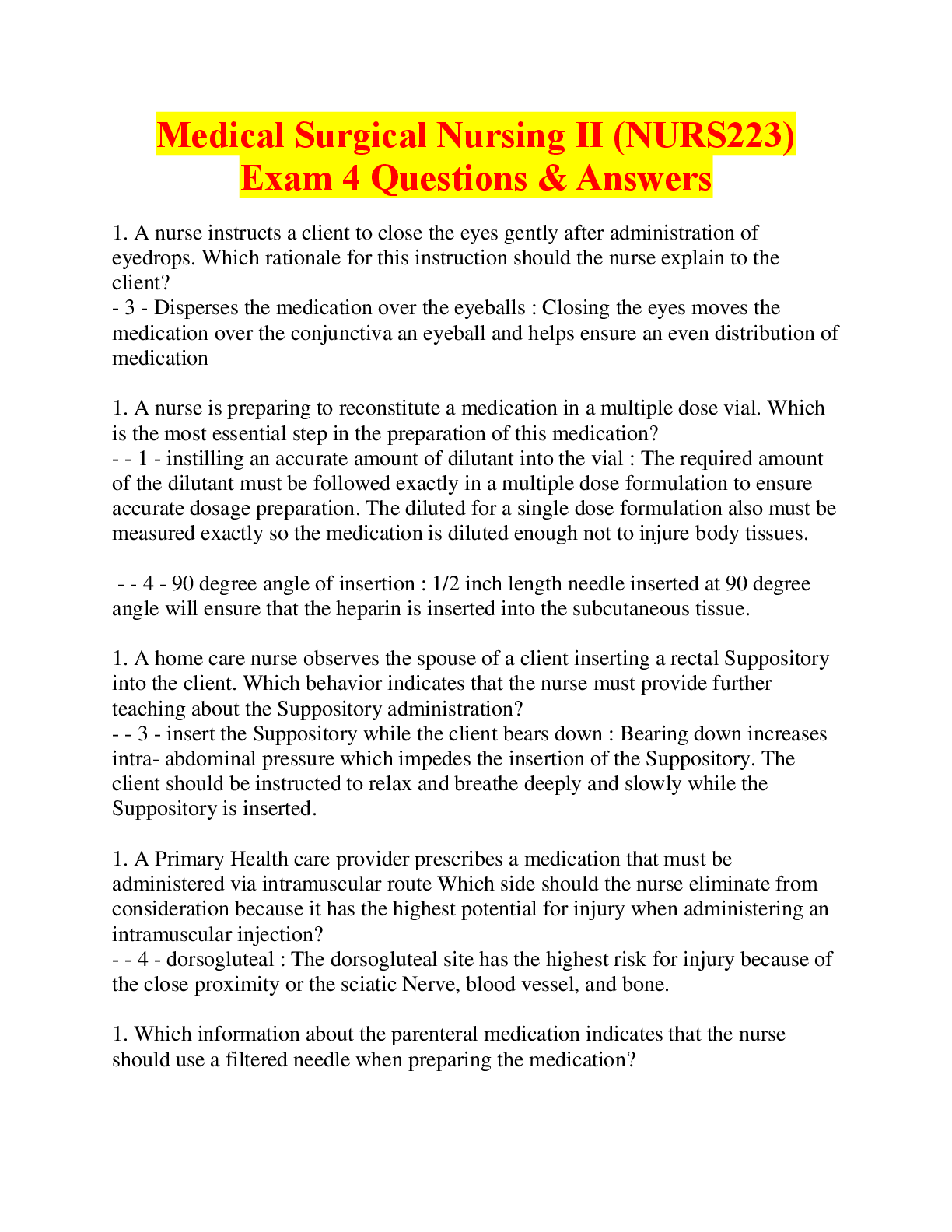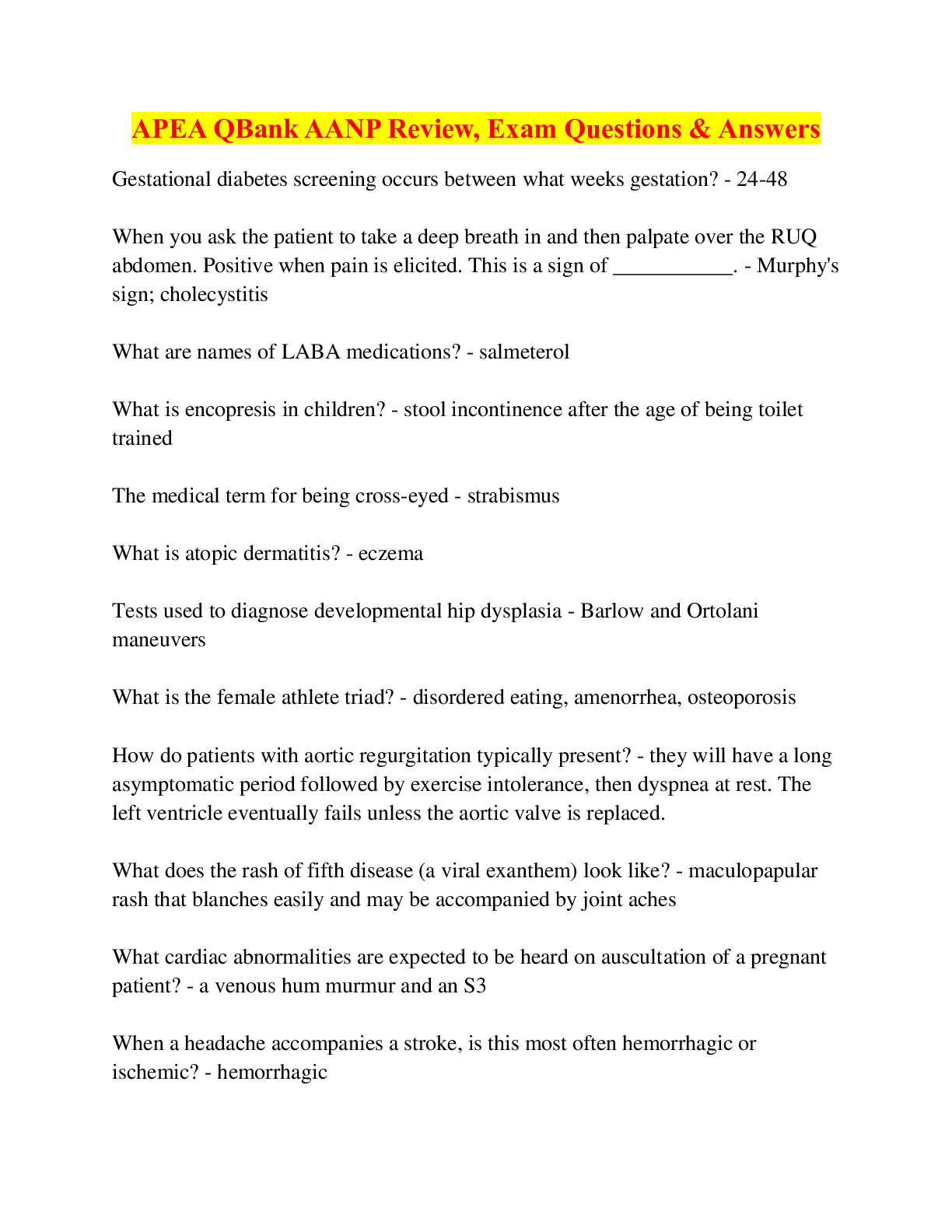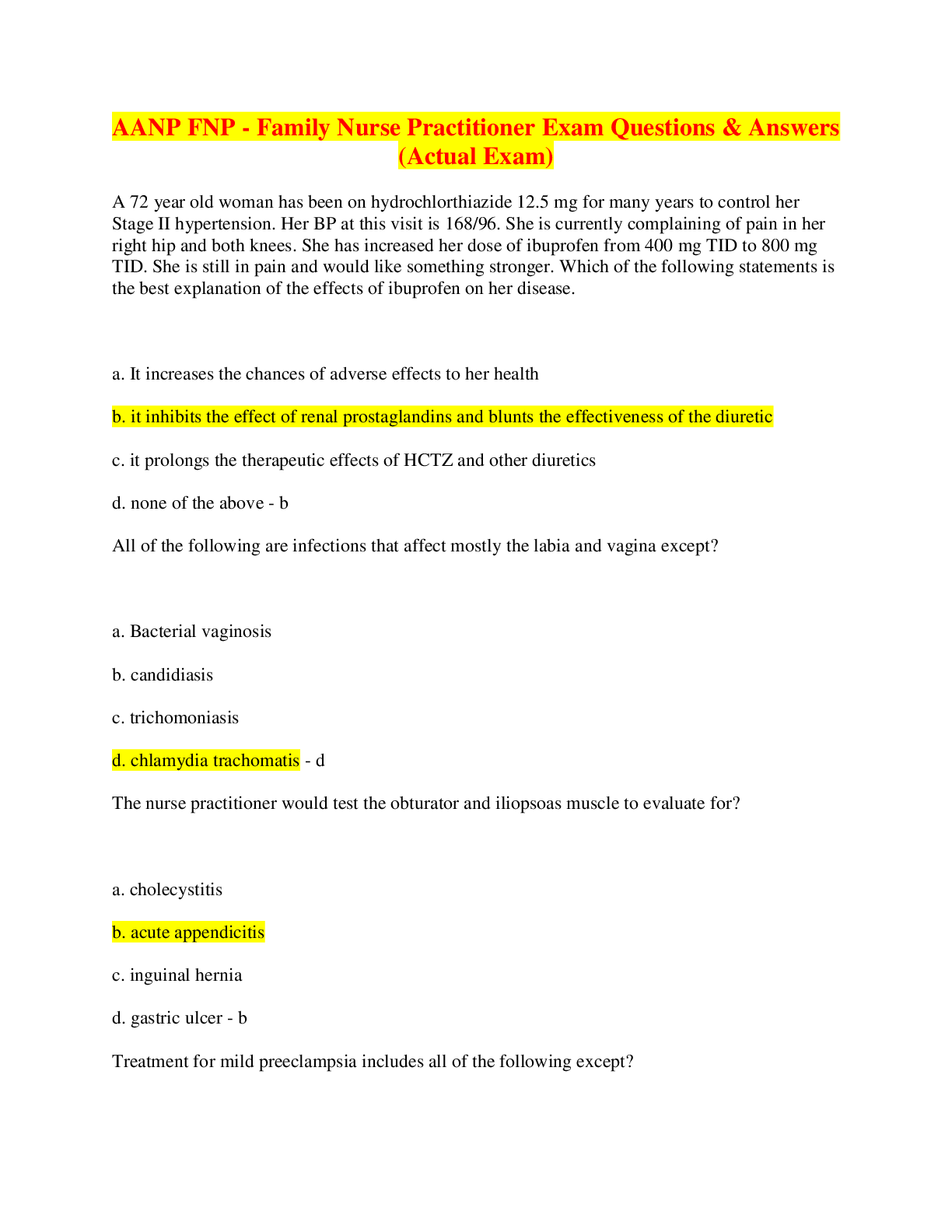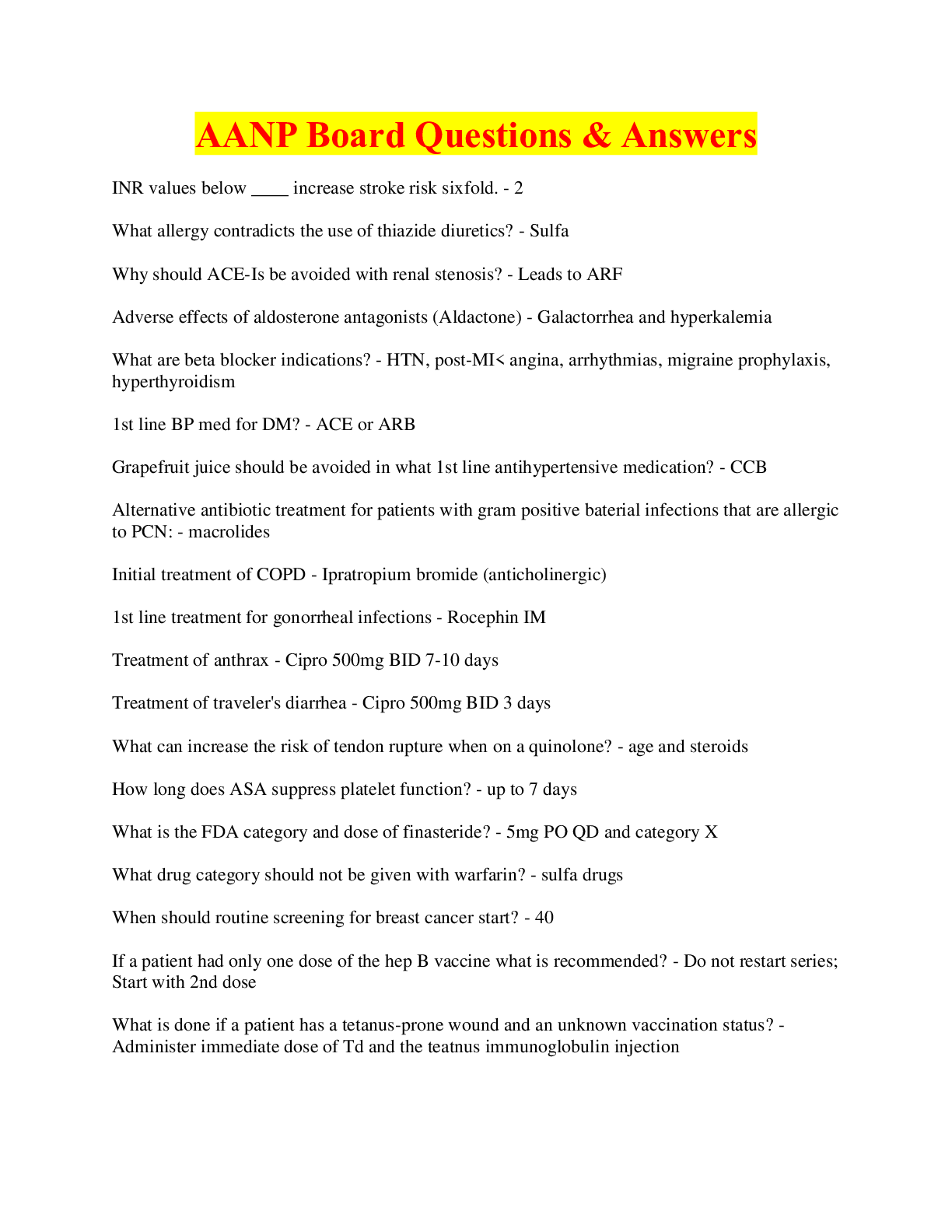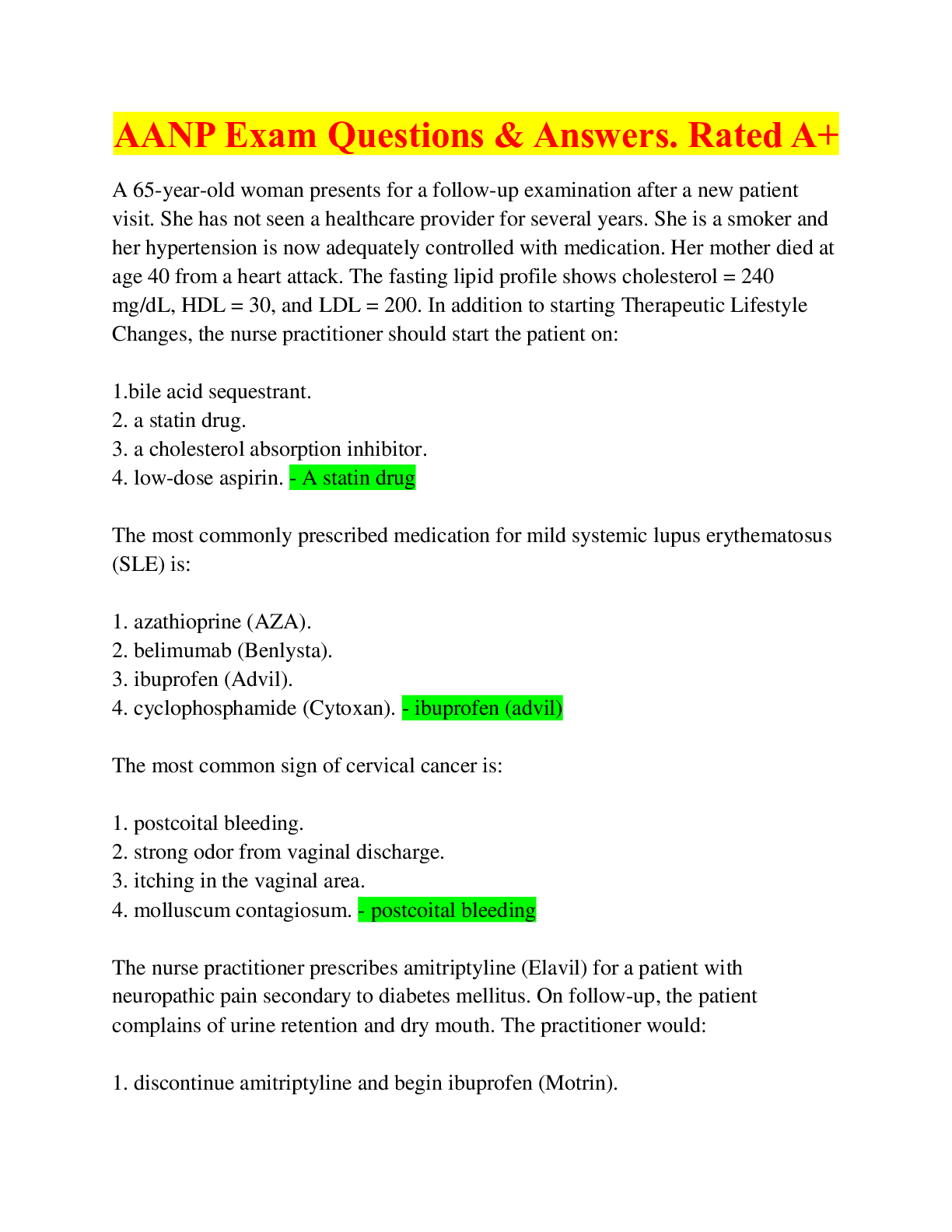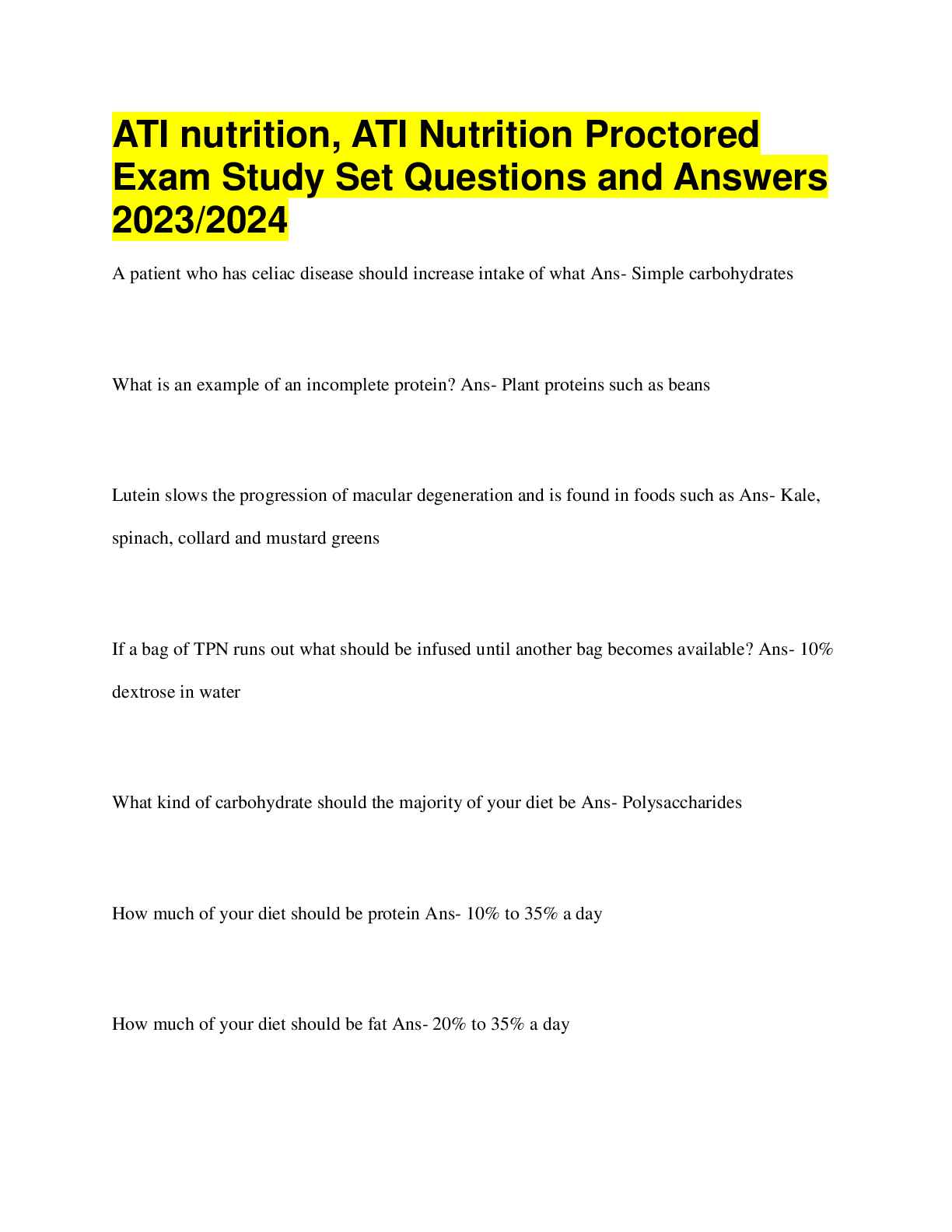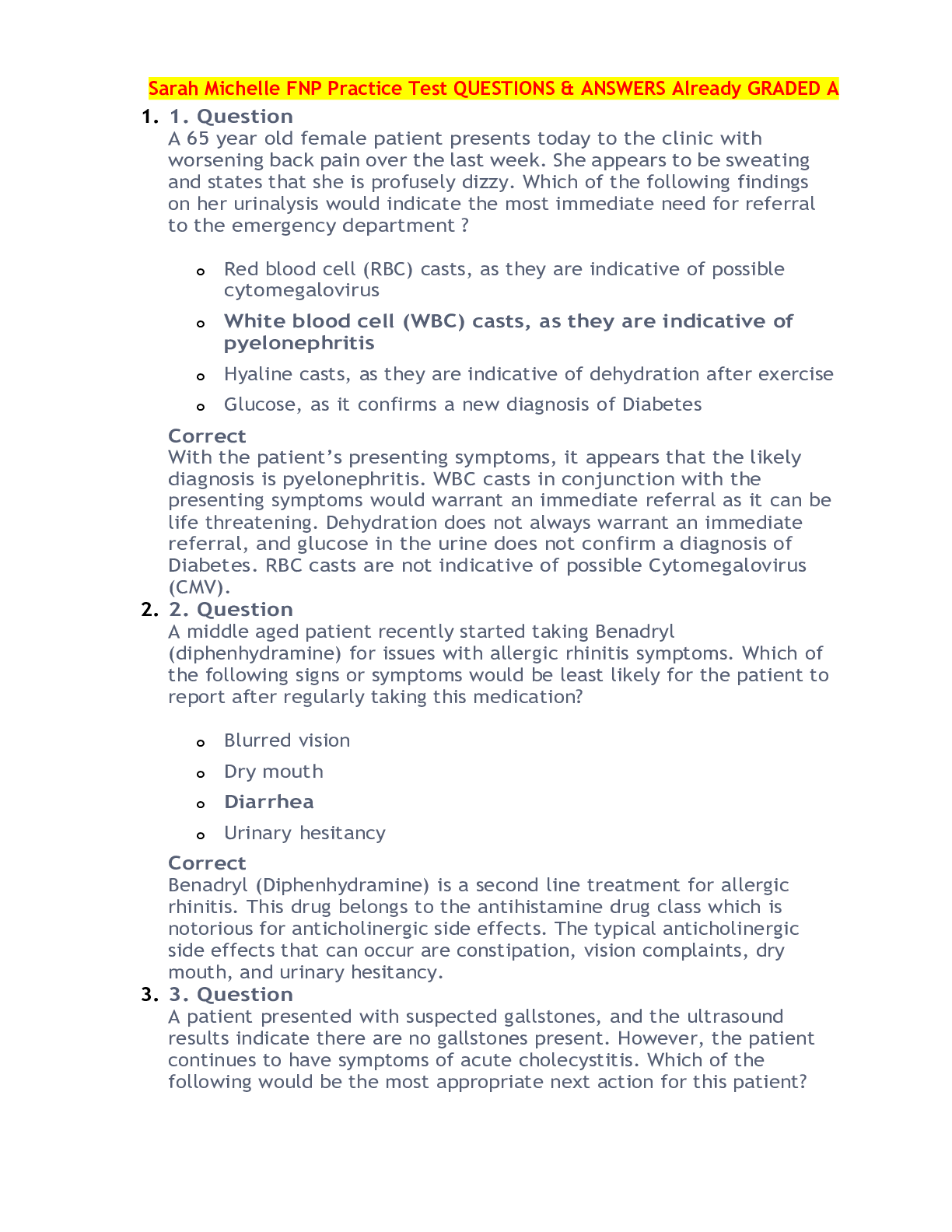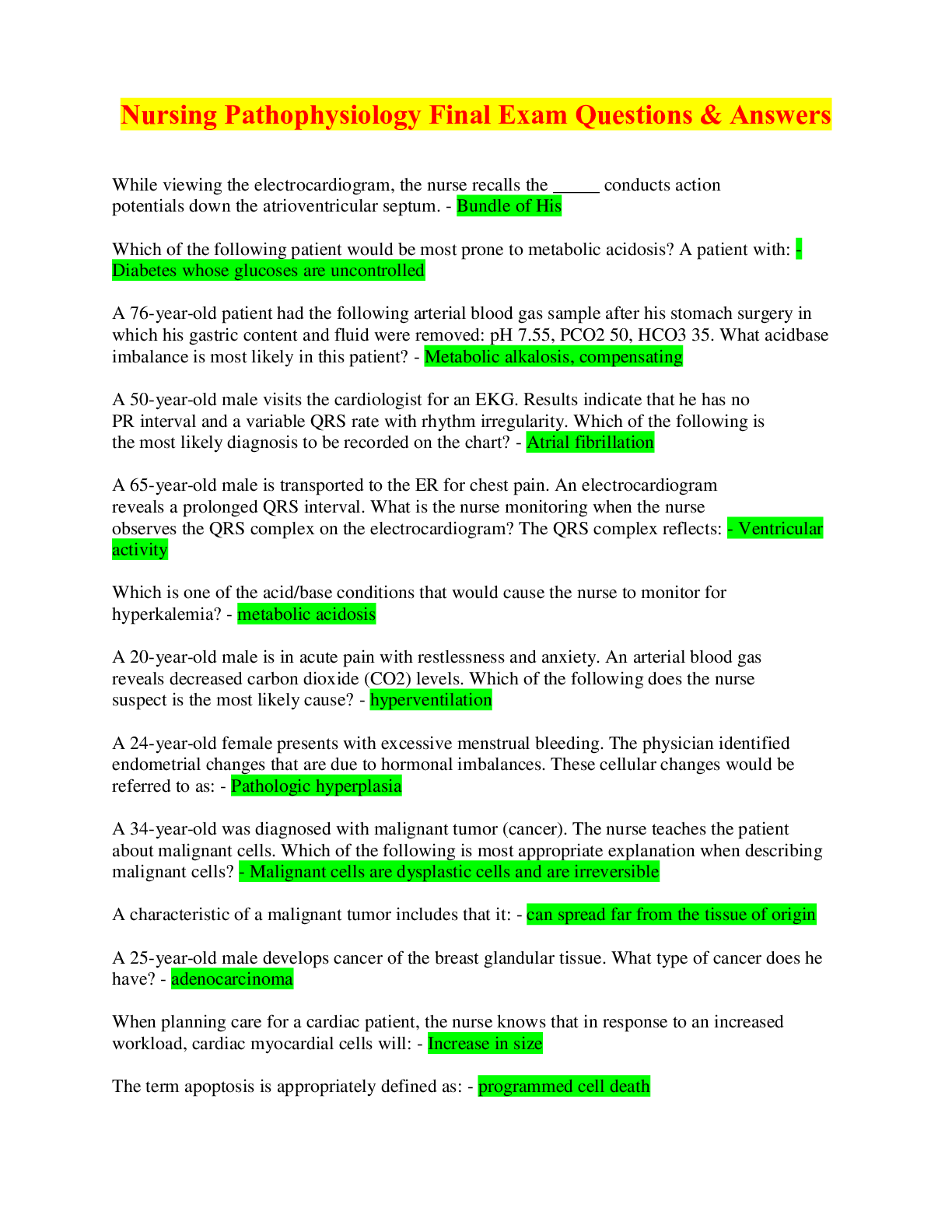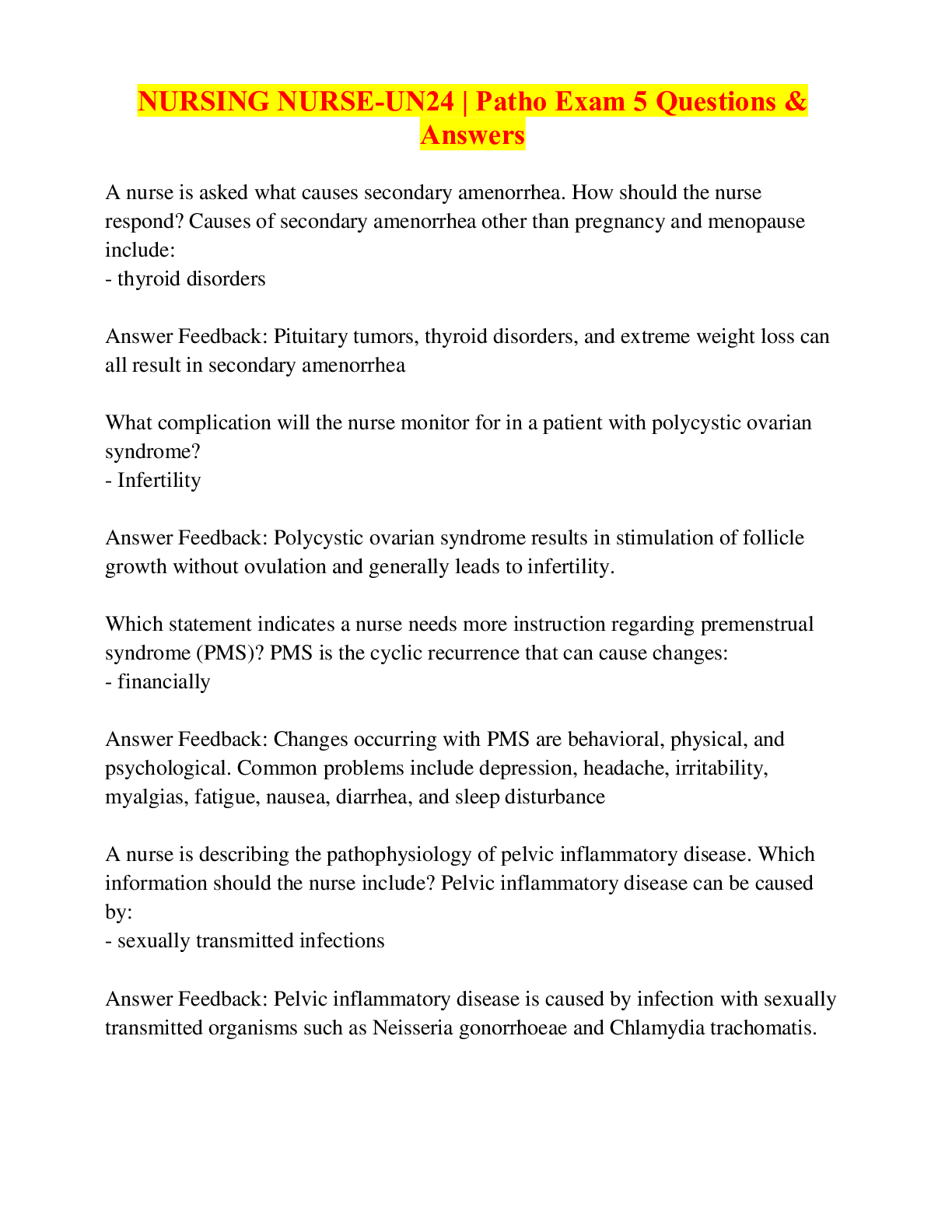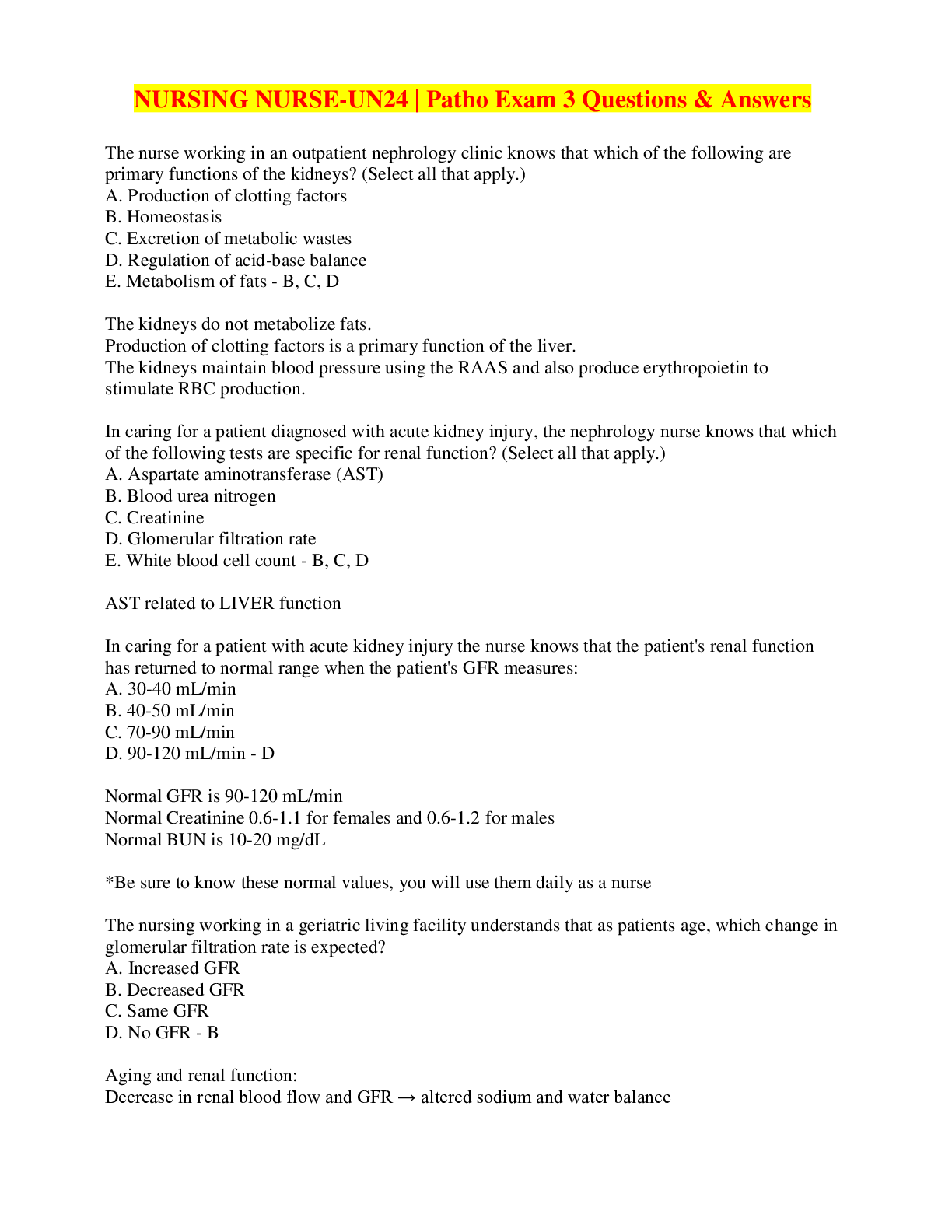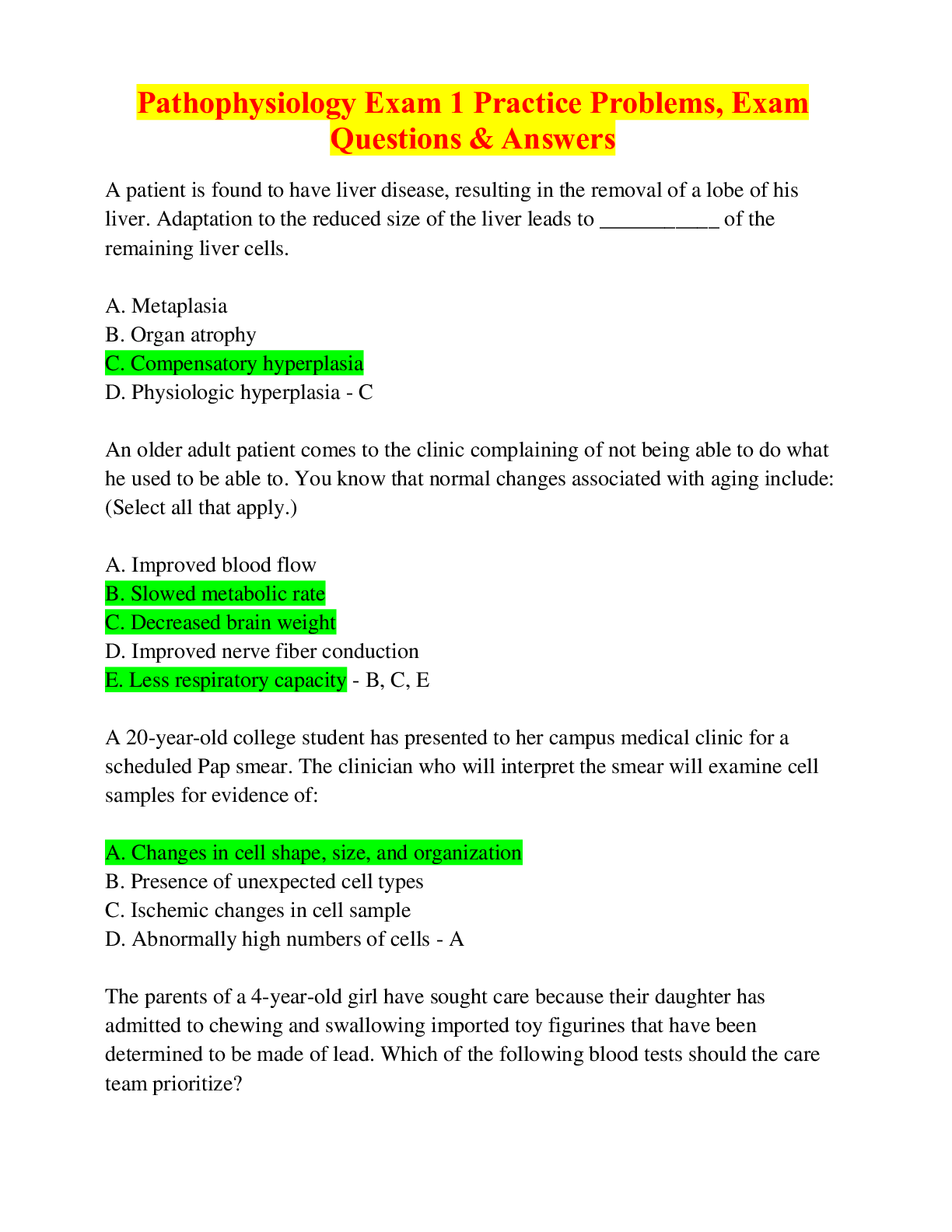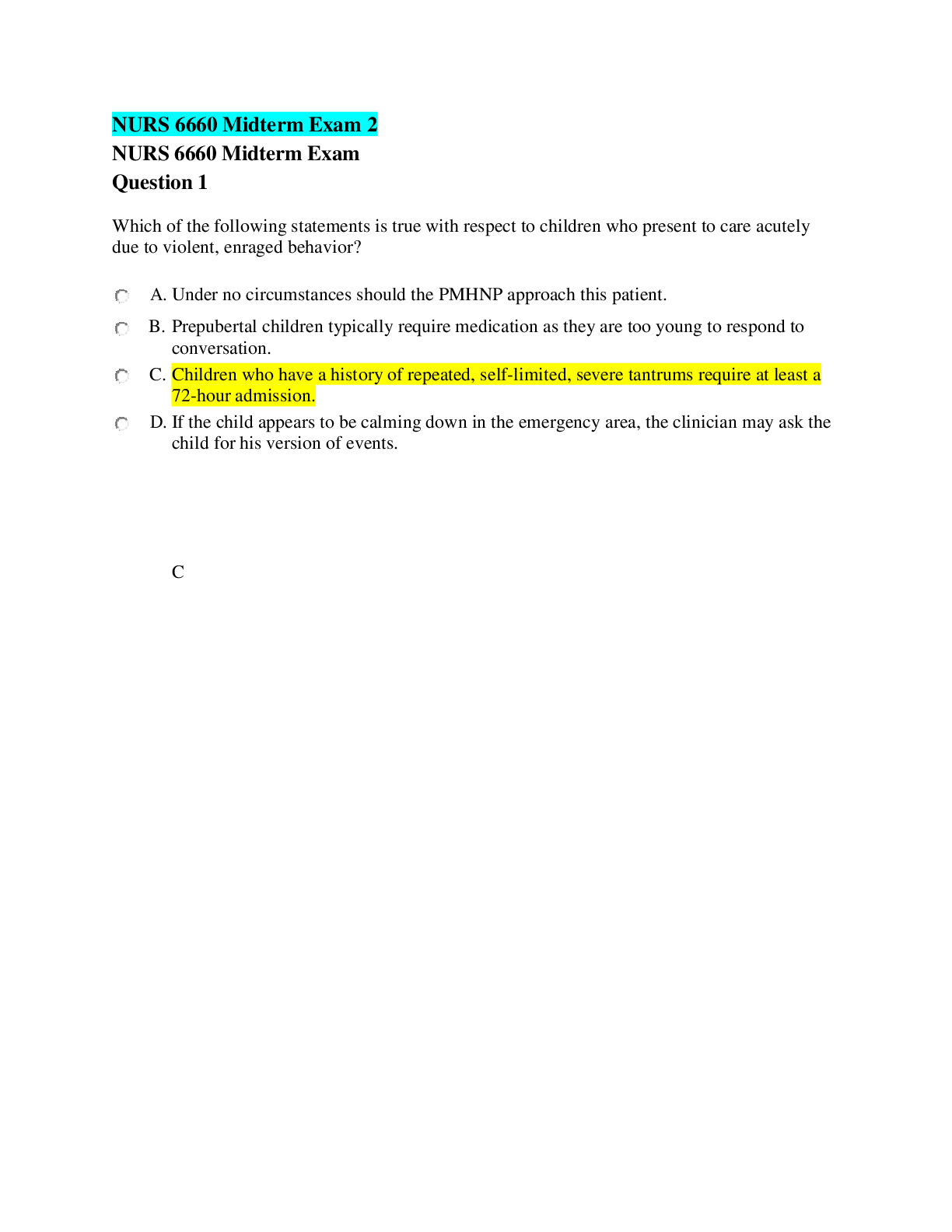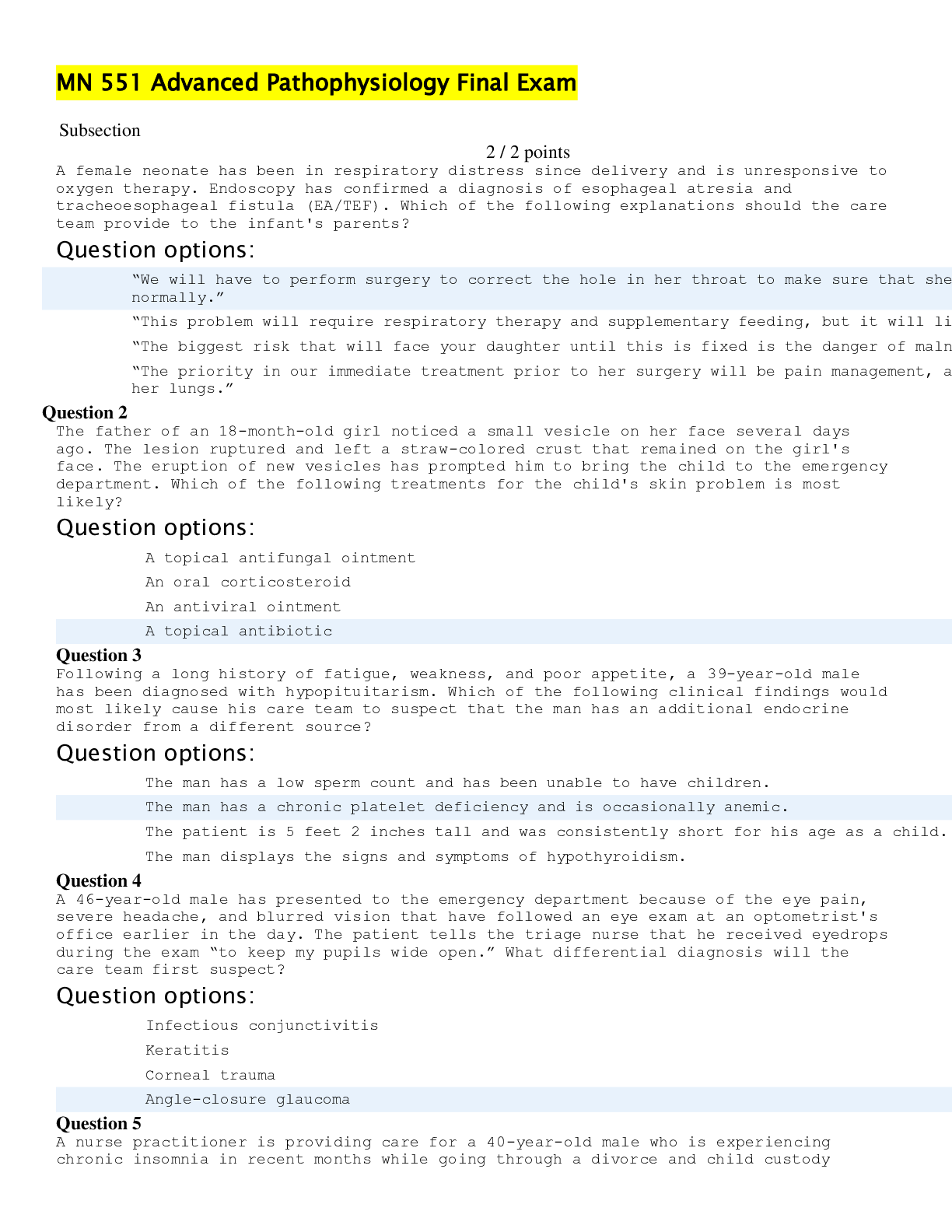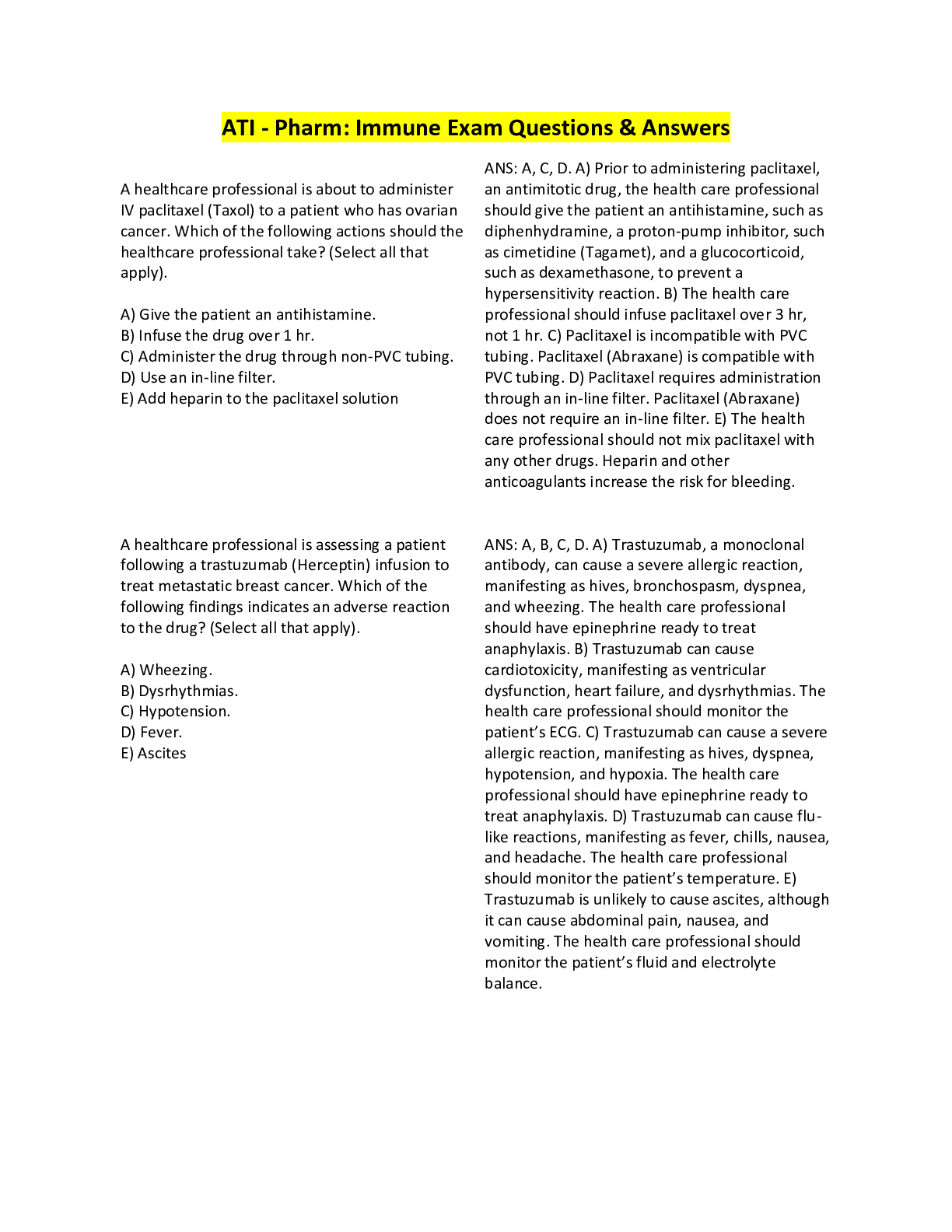healthcare > EXAM > KNH 188 Exam 3 Practice Questions & Answers, Physical Activity and Health, Rated 100% (All)
KNH 188 Exam 3 Practice Questions & Answers, Physical Activity and Health, Rated 100%
Document Content and Description Below
KNH 188 Exam 3 Practice Questions & Answers, Physical Activity and Health, Rated 100%-Types of diabetes and prediabetes - ANS-type 1 -type 2 - gestational diabetes mellitus (GDM)- during pregnancy ... - pre-diabetes (impaired glucose tolerance or homeostasis) type 1 diabetes mellitus - ANS - represents about 5-10% of all cases of diabetes - 2 forms: - immune mediated- beta cells destroyed by autoimmune process - idiopathic- cause of beta cell function loss unknown 1. the stomach changes food into glucose 2. glucose enters the blood stream 3. the pancreas makes little or no insulin 4. little or no insulin enters the bloodstream 5. glucose builds up in the bloodstream In the human cell, insulin must bind with receptors before glucose can enter the cell. Without enough insulin, very little glucose is transported to the cell. Beta cells – ANS- insulin cells, cells that make insulin and controls levels of glucose in the blood Type 1 causes -ANS - Immune-mediated: - genetic predisposition - autoimmune reaction may be triggered by viral infection, toxins - destroys B-cells in pancreas that produce insulin Idiopathic (cause unknown) - strongly inherited - african or asian ancestry Type 1 symptoms -ANS - hyperglycemia -excessive thirst (polydipsia) - frequent urination (polyuria) - significant (sudden) weight loss - electrolyte disturbance - ketoacidosis: body doesn't have enough insulin to allow blood sugar into cells for energy use. Fruity breath occurs type 2 diabetes --ANS - 90% of people with type 2 are overweight or obese and physically inactive - most common form of diabetes accounting for 90 to 95% of diagnosed cases - combination of insulin resistance and beta cell failure (insulin deficiency) - progressive disease - ketoacidosis rare, usually arises in illness - characterized by chronic hyperglycemia - associated with microvascular and macrovascular complications: retinopathy, nephopathy (liver), neuropathy (lower legs), optometry may spot the first signs. - generally arises from a combination of insulin resistance and B-cell dysfunction - 75% of patients die from CVD - non-insulin dependent= type 2 1. the stomach changes food into glucose 2. glucose enters the blood stream 3. the pancreas makes insulin 4. insulin enters the bloodstream 5. glucose can't get into the cells of the body. Glucose builds up in the blood vessels Most people with type 2 have more than enough insulin but the receptors are resistant to insulins action type 2 symptoms -ANS - hyperglycemia -insidious onset - often goes undiagnosed for years - excessive thirst (polydipsia) - frequent urination (polyuria) - polyphagia - weight loss hypoglycemia - fast heartbeat - shaking - sweating -nervousness or anxiety - irritability or confusion - dizziness - hunger type 2 risk factors -ANS - -family history of diabetes - older age - obesity, particularity intra-abdominal obesity - physical inactivity - prior history of gestational diabetes - pre diabetes diagnosis (impaired glucose homeostasis) - race or ethnicity: black, hispanic, native are the highest pancreas role --ANS Regulates blood glucose through secretion of insulin and glucagon Insulin: - regulates glucose metabolism - secretion is stimulated by an increase in blood glucose - critical for growth and development, also protein synthesis - B-cells are located in the pancreas and produce insulin Glucagon - main function is to stimulate glycogenolysis and gluconeogenesis ---glycogenolysis: breaking glycogen into glucose-6-phosphate --- gluconeogenesis: creation of new glucose - secretion is stimulated by low blood glucose - sigma-cells are located in the pancreas and produce glucagon type 2 pathophysiology - -ANS - results from a combo of insulin resistance and B-cell failure --- insulin resistance: decreased tissue sensitivity or responsiveness to insulin - endogenous insulin levels may be normal, depressed, or elevated, but inadequate to overcome insulin resistance - insulin resistance-> compensatory ^ insulin secretion -> glucose remains normal - as insulin production fails, ^ post-prandial blood glucose --- post prandial= after eating -liver production of glucose increases, resulting in ^ fasting blood glucose -glucotoxicity and lipotoxicity further impair insulin sensitivity and insulin secretion [Show More]
Last updated: 7 months ago
Preview 4 out of 13 pages

Loading document previews ...
Buy this document to get the full access instantly
Instant Download Access after purchase
Buy NowInstant download
We Accept:

Reviews( 0 )
$9.50
Can't find what you want? Try our AI powered Search
Document information
Connected school, study & course
About the document
Uploaded On
Dec 05, 2024
Number of pages
13
Written in
Additional information
This document has been written for:
Uploaded
Dec 05, 2024
Downloads
0
Views
8

